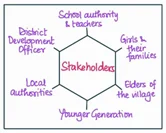Previous PostYou are heading a district administration in a particular department. Your senior officer calls you from the State Headquarters and tells you that a plot in Rampur village is to have a building constructed on it for a school. A visit is scheduled during which he will visit the site along with the chief engineer and the senior architect. He wants you to check out all the papers relating to it and ensure that the visit is properly arranged. You examine the file which relates to the period before you joined the department. The land was acquired for the local panchayat at a nominal cost and the papers showed that clearance certificates are available for the two of the three authorities who have to certify the site’s suitability. There is no certification by the architect available on file. You decide to visit Rampur to ensure that all is in the order as stated on file. When you visit Rampur, you find that the plot under reference is a part of Thakurgarh fort and that the walls, ramparts, etc., are running across it. The fort is well away from the main village, therefore a school here will be a serious inconvenience for the children. However, the area near the village has potential to expand into a larger residential area. The development charges on the existing plot, at the fort, will be very high and the question of heritage site has not been addressed. Moreover, the Sarpanch, at the time of acquisition of the land, was a relative of your predecessor. The whole transaction appears to have been done with some vested interest. (a) List the likely vested interest of the concerned parties. (b) Some of the options for action available to you are listed below. Discuss the merits and demerits of each of the options: (i) You can await the visit of the superior officer and let him make a decision. (ii) You can seek his advice in writing or on the phone. (iii) You can consult your predecessor/ colleagues, etc, and then decide what to do. (iv) You can find out if any alternate plot can be got in exchange and then send a comprehensive written report. Can you suggest any other option with proper justifications?
